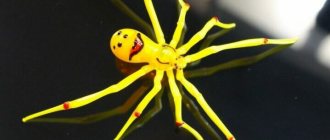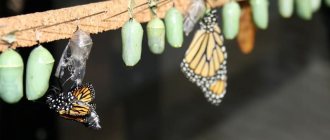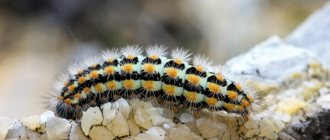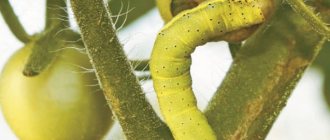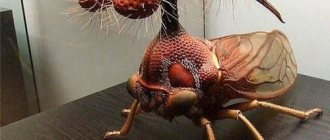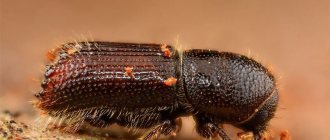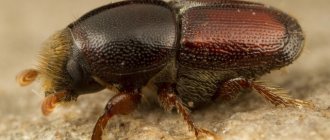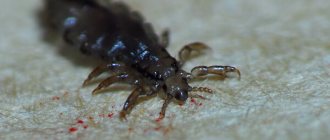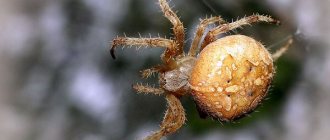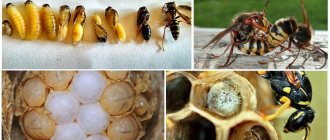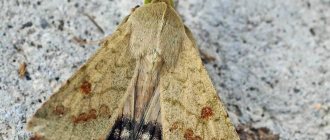Butterflies are extremely attractive creatures. It's hard to believe that they start life as ugly crawling caterpillars and only later turn into winged beauties. How can you not envy a butterfly when it flutters among fragrant flowers? But in reality, her life is not at all so serene. Butterflies are the most beautiful insects on Earth. They have no equal in their coloring. Most butterflies are considered harmless and harmless. However, some of them use toxic substances to protect themselves from predators. Adult butterflies, as well as their larvae (caterpillars), can be poisonous. There are thousands of species of butterflies in the world, most of them are distinguished by their bright colors and marvelous patterns on their wings.
The life of any butterfly begins with a tiny caterpillar hatched from an egg. Each species of butterfly has its own favorite plant, on which they lay eggs and become the main food of the caterpillars. But the caterpillars themselves can become prey for many animals, including insectivorous birds. Caterpillars spend their entire lives chewing and growing. After several weeks of life, the caterpillar becomes a motionless pupa. Under the hard covers in which an amazing transformation into a butterfly takes place. All insects are characterized by development with transformation (metamorphosis). They begin life in the form of a larva, which bears little resemblance to an adult insect. And only after some time the grown larva turns into a butterfly, dragonfly or ladybug.
Adult butterflies typically live only a few weeks, feeding on flower nectar. Their long proboscis penetrates even the deepest flowers. Butterflies can not only flutter, but also fly very quickly, reaching speeds of up to 50 km/h. Danaid Monarch is a tireless traveler, she makes long migrations. Butterflies fly from Canada to Mexico and back. The short life of a butterfly ends after laying eggs. Not all butterflies fly during the day. Some are active at night when there are fewer insectivorous birds. Moths, or moths, are usually less brightly colored, in gray or brownish tones. Therefore, it is very difficult to notice a moth resting on a tree trunk during the day. Butterflies are very valuable plant pollinators.
They carry pollen by flying from flower to flower in search of nectar on which to feed. Butterflies have an excellent sense of smell, which allows them to respond to the smells of flowers, suggesting the time of appearance of nectar. They also find their partners by smell. Males sometimes fly long distances to find a female ready to mate. The butterfly's olfactory organs are located mainly on the antennae and legs. Most butterflies are female and die shortly after laying their eggs near a food source suitable for the caterpillars that will hatch from those eggs. Butterflies like to lay eggs on certain types of plants. They find nettles, thistles and clovers especially attractive. In addition, butterflies love the nectar of certain flowering plants, such as goldenflower, which is very attractive to them. Butterflies (and their close relatives moths and noctule moths) belong to a family with the scientific name Lepidoptera, which means “lepidoptera.”
Butterfly wings are not only very beautiful, they are much stronger than they might seem at first glance. It happens that during migration, certain species of butterflies fly across the entire continent. The wings of certain species of butterflies are riddled with blood vessels. The blood contains special chemicals that protect the wings from freezing if cold weather overtakes the butterfly on its way. Most species of butterflies have special olfactory points on their antennae. Thanks to which, during the mating period, they can smell the butterfly of the opposite sex of the same species.
Appearance
Like other insects, its body consists of three main sections: head, chest (thorax) and abdomen. Three pairs of legs are attached to the thoracic region, each of which consists of four segments. The legs of the first pair are often very weak, and therefore the butterfly keeps them folded just below the head. The butterfly's vision is relatively good, although the antennae, which are the most powerful sense organs, are much more important for it. They grow from the front of the head and are able to detect odors over a long distance. This happens thanks to thousands of tiny holes that serve as excellent olfactory organs. Butterflies use their antennae to search for food and mates. They clean their antennas frequently, keeping them in good "working" condition. Having sat down to rest on a flower, the butterfly can almost immediately begin sucking the sweet flower nectar. Why does it roll out its long proboscis, like a tubular tongue? The proboscis can penetrate deep into the base of the flower, where nectar is stored.
However, in matters of taste, the butterfly relies not only on the tongue - it can taste the leaves through the legs. By feeling the surface of the leaf with her paws, she can determine whether it is suitable for laying eggs. Sometimes it is not easy to distinguish a male butterfly from a female. But some species have clear distinctive features. For example, the male of one species of butterfly, the white butterfly, has orange markings on the tips of his wings, while the female has pure white wings. The eyes of insects consist of small eyes called ommatidia. Each ommatidium ends with a facet - a hexagonal lens. Therefore, insects see the world as a mosaic consisting of tiny hexagons. Butterflies are distinguished from other insects primarily by four large wings with a bright, memorable pattern. The color and pattern of the wings is the most important characteristic of a butterfly species. Of which there are about 140 thousand species. The front pair of legs of butterflies is shortened and covered with thick hairs - for butterflies this is a taste organ. The coiled proboscis of the sucking mouth are elongated lower jaws.
Coloring.
Many butterflies do not imitate anyone and do not have a repulsive taste. They are protected by protective (camouflage, or cryptic) coloring. The Arctic Crix species is found in the Sierra Nevada Mountains (California) in two forms: the orange one is confined to areas with orange-brown basaltic rocks, and the light one is confined to outcrops of light granites. The larvae and pupae of many butterflies are very difficult to detect, as their green color makes them blend in with the foliage. Adult blackwings, having folded their wings, become very similar to dried leaves or pieces of bark. The most amazing example of such protective coloring is demonstrated by Asian leaf butterflies.
Other butterflies use a different kind of camouflage - “dismembering” coloring, as if breaking the outlines of the body due to a combination of contrasting spots. Some species have bright markings on their wings designed to divert the attention of predators from vital parts of the body. Probably, the “eyes” on the wings of many marigolds and nymphalids and the orange specks on them in some whites are used for this purpose.
Reproduction
Before butterflies become adult insects, they go through three main stages and look different in each one. The complete life cycle from egg to adult butterfly involves certain changes called metamorphosis. After mating, the female butterfly finds a suitable place to lay eggs. Eggs are laid on plant leaves. There may be only two or three, or many more. Different types of butterflies lay different numbers of eggs. Usually the female leaves her clutch to the mercy of fate and often dies soon after. Meanwhile, the larva develops rapidly inside the egg. The eggs of some species of butterflies have such a thin shell that the movement of the larva in the egg can be observed from the outside.
Two or three weeks later, the larva emerges from the egg and eats its shell. Thanks to this, its body receives the substances necessary for the beginning of the most important (in terms of nutrition) stage of the life cycle - the caterpillar stage. Caterpillars are nothing like the lovely winged creatures they will eventually become. Before this happens, they must go through one more stage. After the caterpillar changes its skin four or five times, something unusual happens to it. However, first the caterpillar finds a hidden place where no predators can notice it. Sometimes it hides in the hollow of a tree, and also buries itself in the ground or settles down under a leaf of a plant. Now she is ready for a new stage of her life cycle.
Suddenly, the caterpillar's skin bursts and slides off its body, revealing a new form called a pupa, or cocoon. The pupa, unlike the caterpillar, cannot even crawl; it is completely motionless. The pupae of some butterfly species are shaped like twigs or leaves. They are inconspicuous and therefore have a greater chance of survival. After a couple of weeks or even months (depending on the species), the pupa matures. In some species, the outer shell of the pupa is almost transparent, so you can see the future butterfly through it even before it emerges from the cocoon. Usually the “birth” occurs in the morning hours. First the head comes into the world, and then the rest of the body. This is not an easy matter - after all, some butterflies have pupae hidden underground, while others have cocoons made of dense plant matter. And finally, after considerable effort, the hatched butterfly spreads its wings, which are still soft and wrinkled after being in the cocoon. The butterfly dries its wings until they harden. After this she can already fly. The metamorphosis is complete.
Mimicry.
Natural selection makes it possible for quite appetizing species to take advantage of someone else's unpleasant taste. Any butterfly that looks inedible will get an additional chance to survive and leave offspring, i.e. will have a selective advantage. The North American “model-imitator” pair – the “tasteless” monarch ( Danaus plexippus)
) and the "delicious" viceroy (
Limenitis archippus
). Interestingly, they even belong to different subfamilies - Danainae and Nymphalinae, respectively.
Butterfly survival
There are a huge variety of butterfly species in the world; they are found in almost every corner of the Earth. Some of them travel long distances to other countries. When autumn comes to southeastern Canada, the harbinger of a long, cold winter, the Danaid butterflies, obeying instinct, begin to fly to warm countries. They gather in huge flocks and fly to California and even southern Mexico. The journey takes them about three months. During this time they cover distances of approximately 4 thousand kilometers. Having arrived at the place, they begin to mate and soon die. With the onset of spring, their offspring, obeying the same instinct, returns to Canada.
However, some butterflies are found only in certain regions of the world. Often, conservation organizations report that their numbers have dropped sharply. For example, the rarest (and largest) butterfly on Earth is believed to be the Queen Alexandra's birdwing. It is found only in one part of Papua New Guinea and has now become extremely rare due to forests being cleared for cropland. The wingspan of this butterfly is 30 cm. It is now listed as an endangered species and is protected by international law on the protection of nature. It’s a pity, but some other species of butterflies are also under threat of complete extinction. Several species have already disappeared irrevocably. Among them is the Great Blueberry, which once lived in Great Britain, but has now almost disappeared from the face of the Earth.
Queen Alexandra's Birdwing
This happened because blueberry caterpillars feed on the larvae and eggs of red ants, which built their homes in short, sparse grass. They cannot live on mowing or sown lands. But oddly enough, as a result of coexistence with certain plants, new species of butterflies may appear. For example, heliconid butterflies laid their eggs on the poisonous passionflower plant. The caterpillars fed on the plant, absorbing the poison and becoming inedible to the birds. Subsequently, in order to scare away butterflies, new varieties of passionflower were bred, releasing a different type of poison.
As a result of this, new subspecies of heliconids arose that were capable of absorbing this poison. Some butterfly collectors pay big money for rare specimens. One butterfly, an endangered species, was bought for £1,785. We must do everything possible to preserve the world's current butterfly species in their natural habitat in all their diversity.
To date, about 170 thousand species of Lepidoptera have been discovered. About 90% of them are moths. Butterflies are very beautiful representatives of insects. They are varied in size and color. Here are some of them.
Coloring.
The coloring of butterflies can be divided into two types: pigment, due to the presence of coloring substances, and “structural,” depending on the arrangement and structure of the scales. In the latter case, it arises as a result of interference and diffraction of sunlight. Many variants of structural coloring, such as iridescence or the metallic shine of the wings, are explained by the superposition of thin layers of transparent plates on top of each other: the length of the light waves reflected by them depends on the angle of incidence of the rays. However, despite all the attractiveness of this color, pigmented ones are much more common.
Goldentail
This butterfly itself, as well as its caterpillars, have poisonous hairs. Touching such a butterfly can cause an allergic reaction. It is enough to simply touch the goldentail or its caterpillar so that the place of contact turns red and begins to itch. A serious problem can arise if a hair from the body of this insect gets into the eye. In this case, you cannot do without medical help. Lacetails live throughout Europe.
Goldentail
How can you get poisoned from them?
How is it possible to develop poisoning from butterflies? Typically, most negative reactions occur as a result of touching an insect. Where is the poison found? The danger comes from hairs, growths, and wings.
Some individuals release poisonous gases, the inhalation of which can lead to negative phenomena. There are predatory butterflies that secrete a toxic liquid. If it comes into contact with the skin, negative consequences develop.
It is not recommended to touch the furry caterpillars. Insect villi can damage the skin, causing itching, blisters and serious irritation.
Ursa
The front wings of this butterfly are dark brown, the span is 50 - 80 mm. The hind wings are red-yellow with black or dark blue spots. Dipper caterpillars are densely covered with brown hairs, which is why the butterflies got their name. Caterpillars feed on plants, some of which are poisonous. The poison accumulates in their body and remains in the body even after the caterpillars turn into butterflies. The venom of some species can be fatal to small animals.
Ursa
Dangers of lepidopteran insects
Because butterflies are still small insects, they face many dangers. These are mainly birds - that's who can eat Lepidoptera. For example, titmice. They can become insect killers when they get their larvae.
They should also be wary of insectivorous species of insects, some types of flies, etc. But most of all they should be afraid of caterpillars .
Despite all of the above, it should be noted that the best habitat for all species of Lepidoptera is wild nature. That is, you should not keep them at home for a long time. Therefore, after the insect is hatched at home, it is better to release it into the wild after a while.
Danaids
Most butterflies of this family have a pattern of dark lines on their wings. Danaids accumulate toxic substances in their bodies, which is why they are not edible for predators. Distributed in North America, Africa and Australia. Many Danaids migrate, covering about 3000 km. During such migrations, clouds of butterflies cling to tree branches, which bend under their weight.
Danaids
Habitat
The largest number of Swallowtails is found in Europe, with the exception of Denmark and Ireland. Some species live well in Asia, North America and Africa.
They prefer to live in steppe and meadow areas, as well as forests and mountains. In the Alps you can find this butterfly at an altitude of two kilometers. Representatives also met in Tibet at an altitude of almost 5 kilometers.
Heliconids
These butterflies are common in Central and South America. They have elongated narrow wings and long antennae. The wings of heliconids are usually brightly colored, often red-yellow-black, sometimes with the addition of blue tones. The body of butterflies is saturated with toxic substances - cyanide, which makes them inedible for insectivorous animals.
Heliconids
Madagascar comet
The Madagascar comet or moon moth is a very large lepidopteran insect from the peacock eye family. It is endemic to Madagascar, that is, found only on this island, in humid forests. The Madagascar comet is beautifully bred in captivity, decorating butterfly gardens and many collections. The great demand for it has led to the Malagasy selling the eggs of this butterfly for export; the insect population on its native island is slowly decreasing. The butterfly lays eggs on the underside of plant leaves, which the caterpillars then feed on. After 10-20 days, the larvae hatch, go through four molts in 2 months, turning into large green caterpillars. Each caterpillar makes a cocoon and pupates in it, and only then a beautiful butterfly appears.
Madagascar comet
CONNECTIONS WITH OTHER ANIMALS
Of all the groups of diurnal butterflies, blueberry caterpillars (family Lycaenidae) seem to deviate the most from the typical lepidopteran lifestyle. The predatory habits of miletines have already been mentioned above. In addition, the larvae of some bluegills live in a mutualistic (mutually beneficial) symbiosis with ants, which protect them from enemies in exchange for the sweet secretions of special glands, “honeydew.” Caterpillars of other bluebirds, in particular one Australian species, eat ant larvae. Some whites also cohabit with ants, supplying them with honeydew through tubular bristles connected to the glands that produce it.
Daytime peacock eye
Daytime peacock's eye - the butterfly lives throughout Eurasia, with the exception of the tropics and tundra. This bright insect inhabits meadows and forest edges, city parks and forest belts, banks of rivers and lakes, and climbs mountains to a height of up to 2500 m. The butterfly lays eggs on the underside of a nettle leaf. The pupal stage lasts one to two weeks, and the caterpillar stage lasts two months. In temperate climates, the day eye produces one generation per summer, in the south - two or even three. Caterpillars feed on the leaves of nettles, burdocks and hops, and butterflies drink nectar and juice of different plant flowers.
Daytime peacock eye
When we talk about endangered species, we often think of bears, whales, pandas, gorillas or wolves. But there are also small animals that are in danger of extinction, including some types of insects. The Indians of South America believe that if you hang a picture of a butterfly at your head at night, you will see something good in your dreams. According to another belief, if a butterfly flies into your house, then someone’s wedding will soon take place in the family. Insects, in addition to being food for animals, also play a very important role for all natural ecosystems: they pollinate flowers, distribute seeds, contribute to the reproduction of dead animals and plants, and fertilize the earth.
